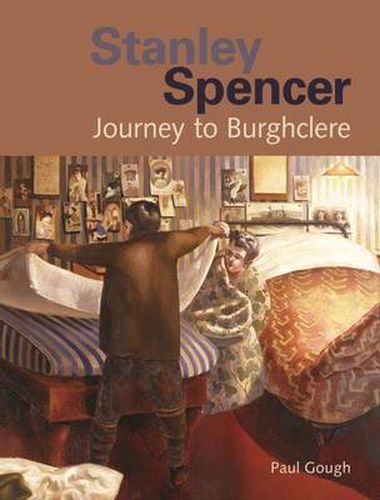Readings Newsletter
Become a Readings Member to make your shopping experience even easier.
Sign in or sign up for free!
You’re not far away from qualifying for FREE standard shipping within Australia
You’ve qualified for FREE standard shipping within Australia
The cart is loading…






Stanley Spencer was one of Britain’s greatest twentieth-century artists. He became famous for two things: his celebration and immortalisation of his home town of Cookham in Berkshire - his ‘heaven on earth’ as he lovingly called it - and the fusion in his paintings of sex and religion, the heavenly and the ordinary. In 1915, Spencer left home to serve as a medical orderly in the Beaufort Military Hospital in Bristol. Aged 24, he had rarely stayed away overnight from home. For ten months he scrubbed floors, bandaged convalescent soldiers and carried supplies around the vast, former lunatic asylum. In 1916, he signed up for overseas duty in Macedonia, where he saw violent action up to the eve of the Armistice. Five years after the war, Spencer started making large drawings of a possible memorial scheme based on his wartime experiences. So extraordinary were his sketches, and so committed was he to realising them in paint, that the Behrend family became his patrons, funding a purpose-built memorial chapel at Burghclere, near Newbury. For five years he toiled, often on top of a giant scaffold, to produce the painted chapel now regarded as his masterpiece - one of the unsung artistic glories of Europe. Drawing on Spencer’s own letters, illustrations and paintings, Paul Gough tells the story of the artist’s journey from cosseted family life, through the drudgery of a war hospital and the malarial battlefields of a forgotten front, to his unique vision of peace and resurrection in Burghclere. The book locates Spencer’s work alongside other soldier-artists of the time.
$9.00 standard shipping within Australia
FREE standard shipping within Australia for orders over $100.00
Express & International shipping calculated at checkout
Stanley Spencer was one of Britain’s greatest twentieth-century artists. He became famous for two things: his celebration and immortalisation of his home town of Cookham in Berkshire - his ‘heaven on earth’ as he lovingly called it - and the fusion in his paintings of sex and religion, the heavenly and the ordinary. In 1915, Spencer left home to serve as a medical orderly in the Beaufort Military Hospital in Bristol. Aged 24, he had rarely stayed away overnight from home. For ten months he scrubbed floors, bandaged convalescent soldiers and carried supplies around the vast, former lunatic asylum. In 1916, he signed up for overseas duty in Macedonia, where he saw violent action up to the eve of the Armistice. Five years after the war, Spencer started making large drawings of a possible memorial scheme based on his wartime experiences. So extraordinary were his sketches, and so committed was he to realising them in paint, that the Behrend family became his patrons, funding a purpose-built memorial chapel at Burghclere, near Newbury. For five years he toiled, often on top of a giant scaffold, to produce the painted chapel now regarded as his masterpiece - one of the unsung artistic glories of Europe. Drawing on Spencer’s own letters, illustrations and paintings, Paul Gough tells the story of the artist’s journey from cosseted family life, through the drudgery of a war hospital and the malarial battlefields of a forgotten front, to his unique vision of peace and resurrection in Burghclere. The book locates Spencer’s work alongside other soldier-artists of the time.